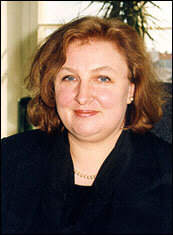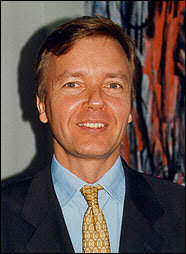 Future Role Future Role |
Besides telecom and banking the Internet has been an advantage for the Estonian tourism business.

With the population of 1,4 million Estonia received 3 million foreign visitors last year. Tourism brings in 10 billion kroons (600 million USD) a year that is 15% of GDP. Tallinn was the second biggest receiver of cruise ships last year in Europe. Germany, Spain, USA and Italy offer the biggest number of tourist passengers. And Tallinn has a lot to offer: comparatively low prices, medieval Old Tallinn and romantic small islands. "In Britain they say that Estonia has a certain pure romantic atmosphere to discover and still brings natural romantic feeling," tells Riina Lõhmus, the general director of The Estonian Tourist Board.
Estonia's romantic countryside is the main resource for farmers, who have 1 million hectares of agricultural land in use out of The Estonian 4.5-million-hectare territory (45,000 sq kms). Half of the Estonian territory is covered by forest, which is the main raw material for dozens of local sawmills and furniture factories. The biggest sawmill, the Imavere Sawmill is also one of the largest companies in Estonia.
Local farmers have been lucky, as The Estonian land
reform has enabled people to buy land and start
their own business. In terms of production The Estonian
agricultural output has declined from 1989. But
Estonia is not the "pig farm" for Moscow
anymore, so farmers have turned from traditional
farming to more efficient businesses: farm tourism,
growing unique plants, growing fertilizer-free crops
etc. The countryside offers lots of investment possibilities
as Estonia has one of the biggest areas of arable
land per capita. "In Estonia the density of
population is small and it provides a situation
where there is little pollution and the environment
is clean," says Ivari Padar, the Minister of
Agriculture. |
The Estonian Prime Minister Mart Laar explains the country's overall success with the invisible hand of free marketand foreign investments that have helped Estonia to change, and that have brought in new technology, people and ideas. "Small structures can move faster," says Laar, who was 30 when he became the head of government for the first time in 1992. Much of the reforms were started during the time he acted as prime minister for the first time.

The head of a Tallinn-based investment bank Trigon Capital, Joakim Helenius sees the future of The Estonian growth in economy as a combination of two ways. One is really acting as a lower cost base for selling goods and services to Scandinavia and the rest of Western Europe. The other one is to act as a bridgehead for doing business with Russia. Tallinn is the biggest city, which is closer to Helsinki than any other Finnish city and not far away from Sweden either. Clearly, if you want to lower cost you could move production to wherever, India as well. But it is not easy to control the business, says Helenius.
"Small is beautiful and Estonia is beautiful," concludes Peep Aaviksoo, the head of Estonia's most successful company Eesti Mobiiltelefon, "We are never going to be strong with our muscles, but we ca be strong with our brains. That is our challenge." |

